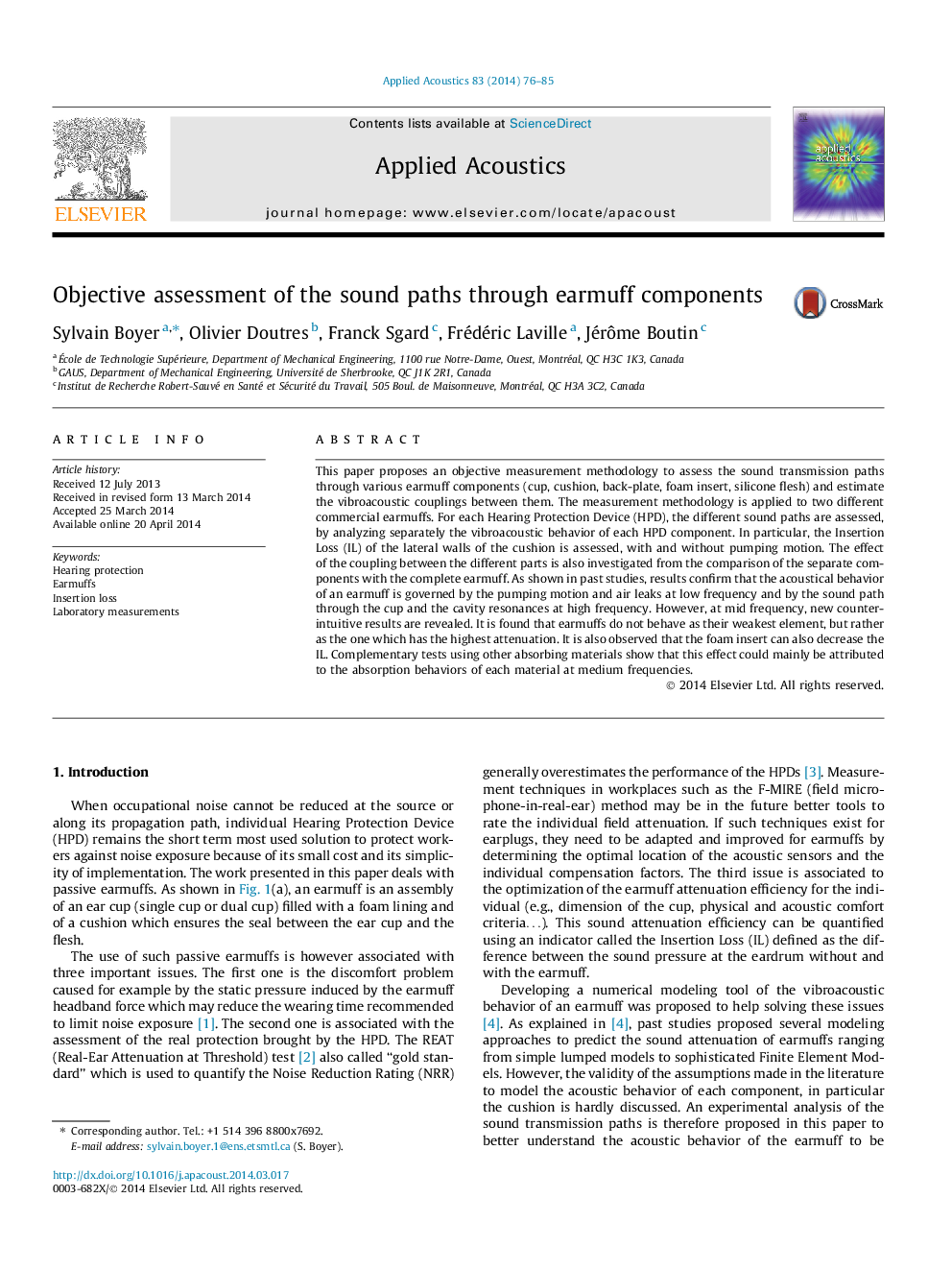| Article ID | Journal | Published Year | Pages | File Type |
|---|---|---|---|---|
| 754452 | Applied Acoustics | 2014 | 10 Pages |
This paper proposes an objective measurement methodology to assess the sound transmission paths through various earmuff components (cup, cushion, back-plate, foam insert, silicone flesh) and estimate the vibroacoustic couplings between them. The measurement methodology is applied to two different commercial earmuffs. For each Hearing Protection Device (HPD), the different sound paths are assessed, by analyzing separately the vibroacoustic behavior of each HPD component. In particular, the Insertion Loss (IL) of the lateral walls of the cushion is assessed, with and without pumping motion. The effect of the coupling between the different parts is also investigated from the comparison of the separate components with the complete earmuff. As shown in past studies, results confirm that the acoustical behavior of an earmuff is governed by the pumping motion and air leaks at low frequency and by the sound path through the cup and the cavity resonances at high frequency. However, at mid frequency, new counter-intuitive results are revealed. It is found that earmuffs do not behave as their weakest element, but rather as the one which has the highest attenuation. It is also observed that the foam insert can also decrease the IL. Complementary tests using other absorbing materials show that this effect could mainly be attributed to the absorption behaviors of each material at medium frequencies.
